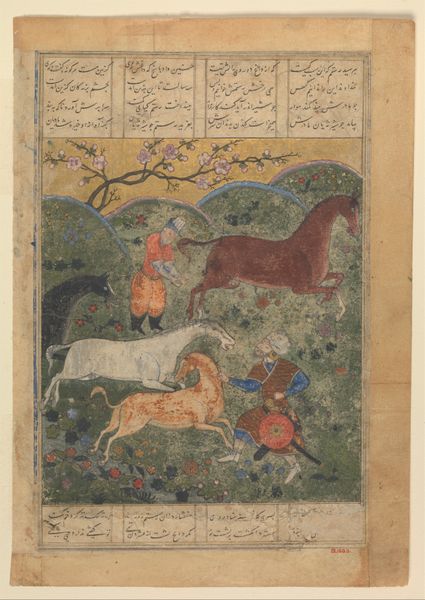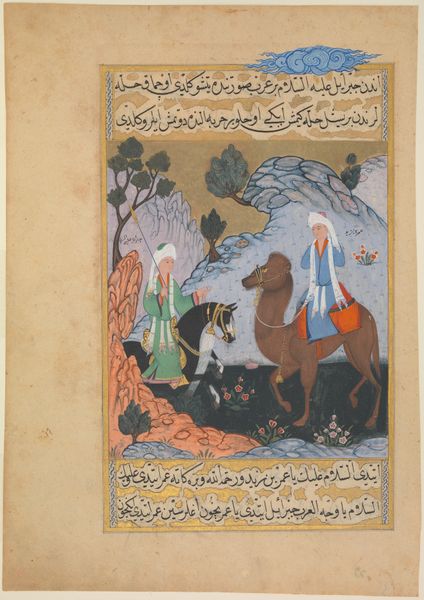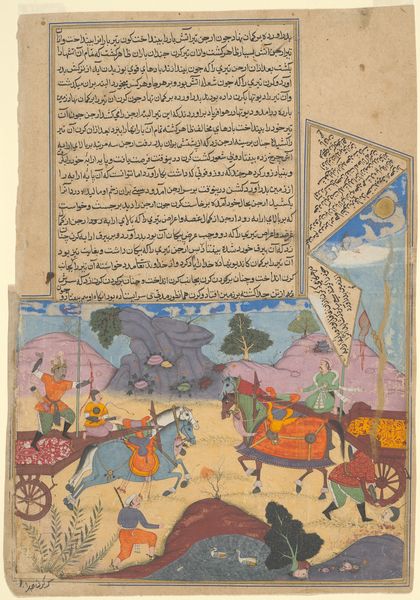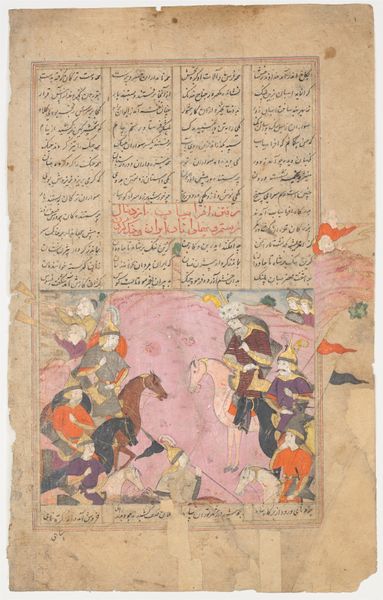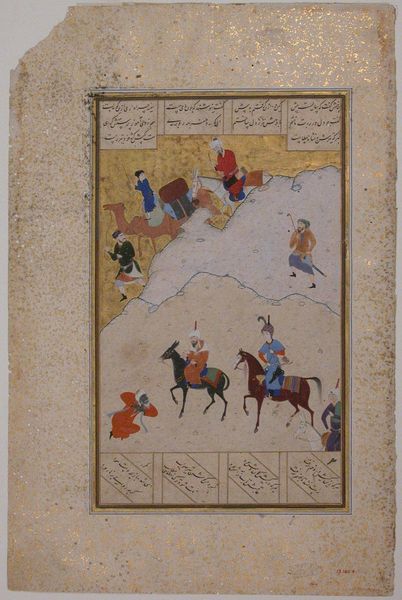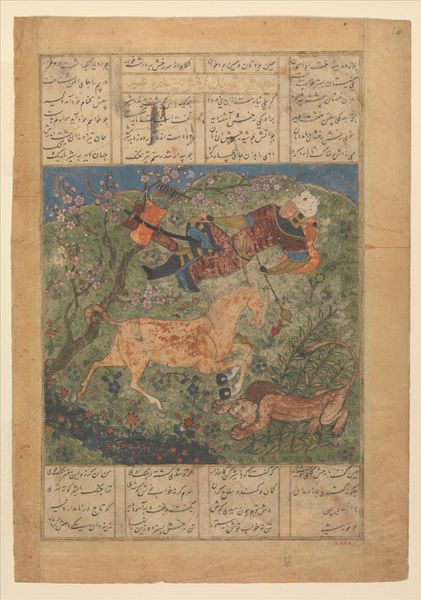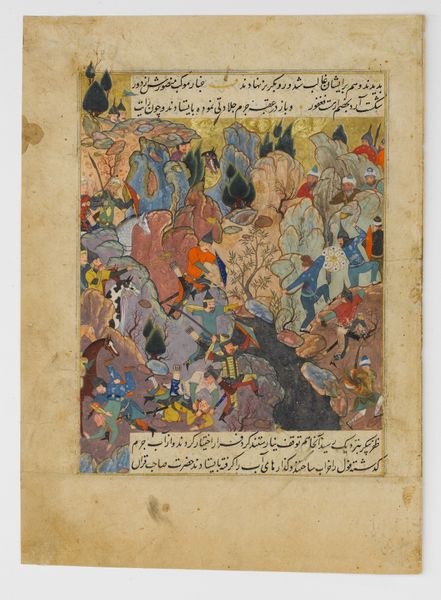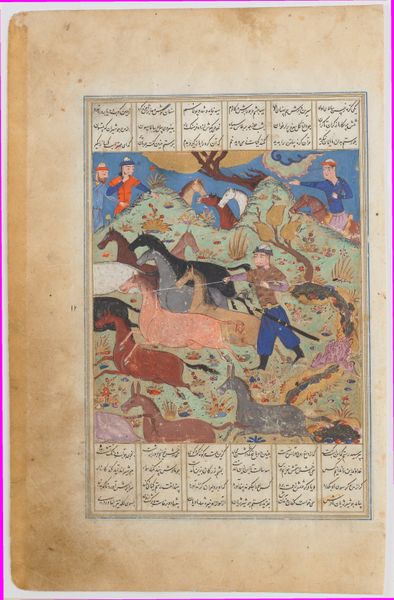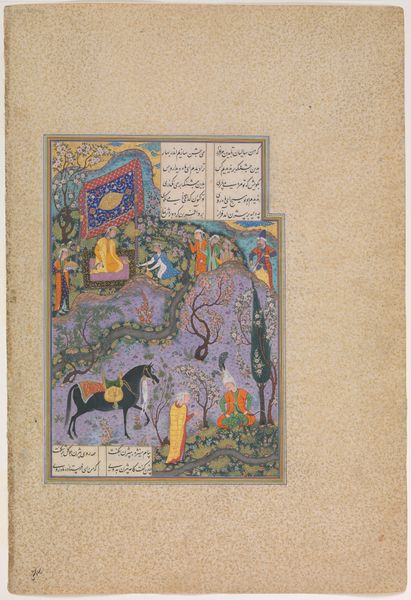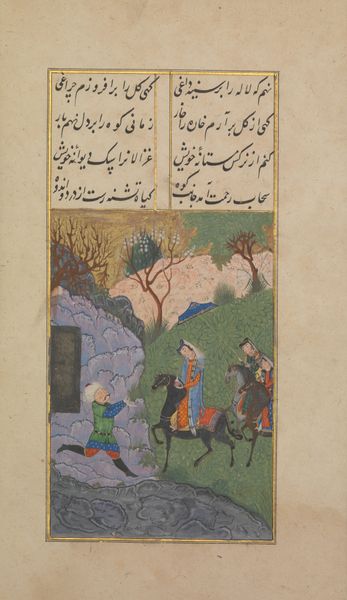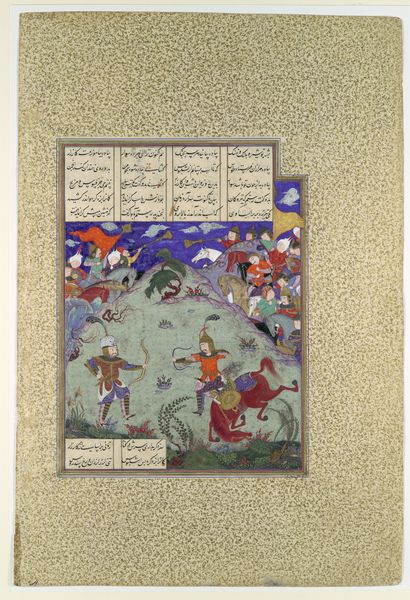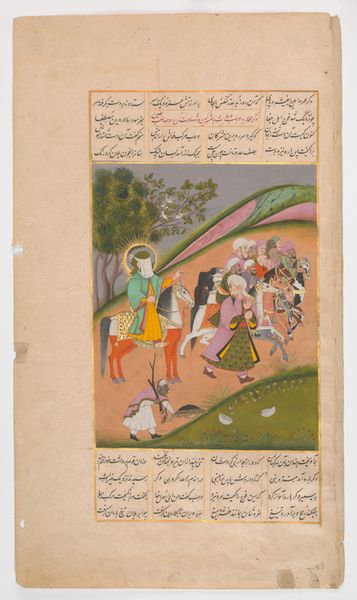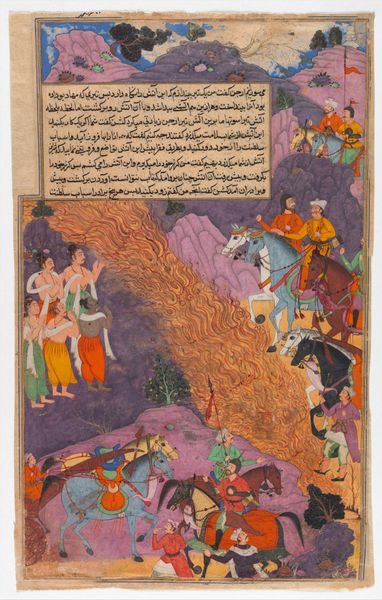
"Bahram Gur on the Chase", Folio 10r from a Haft Paikar (Seven Portraits) of the Khamsa (Quintet) of Nizami of Ganja 1405 - 1455
0:00
0:00
painting, paper, ink
#
narrative-art
#
animal
#
painting
#
landscape
#
figuration
#
paper
#
ink
#
horse
#
islamic-art
#
miniature
Dimensions: Page: H. 11 in. (27.9 cm) W. 7 3/16 in. (18.3 cm) Mat: H. 19 1/4 in. (48.9 cm) W. 14 1/4 in. (36.2 cm)
Copyright: Public Domain
Editor: Here we have “Bahram Gur on the Chase,” a painting on paper with ink, dating back to the early 15th century. It's so vibrant, this miniature with its rich colors, but the hunt itself feels...fraught, almost staged. How do you interpret this work, particularly its narrative? Curator: It’s crucial to consider the painting within its socio-political context. Bahram Gur, a Sasanian king, wasn’t merely depicted as a hunter; the hunt was symbolic of his divinely ordained right to rule and the taming of chaos. The figures accompanying him—consider their attire and perceived social status– what do they represent in terms of the hierarchy reinforced through this imagery? Editor: I guess their presence emphasizes Bahram Gur's authority. But there's also a tension—the lion is vulnerable, almost pitiful. Curator: Precisely. The lion represents not just wildness, but also challenges to power. Killing it isn’t just a display of skill, but an assertion of dominance, a gendered act as well as one that reinforces social hierarchies. Who is allowed to exert dominance? Whose vulnerability is laid bare? These are not accidental details. Editor: So, it’s more than just a scene; it's a carefully constructed political statement. I hadn’t considered the symbolism so deeply. Curator: Art often functions this way, embedding cultural codes and power dynamics within seemingly simple narratives. Think about how this image might have been received, interpreted, and potentially challenged by different audiences at the time, and now. Editor: That's given me a lot to consider about the role of art in reinforcing – and potentially subverting – established power structures. Thank you!
Comments
No comments
Be the first to comment and join the conversation on the ultimate creative platform.
